InOut – Biohybrid Breathing
exploration of technology augmented breathing, mindfulness, & climate change action through art-ethnographic collaboration as a part of the “Biohybrid Bodies: how might we come to live with Living Machines?” project hosted at UCL
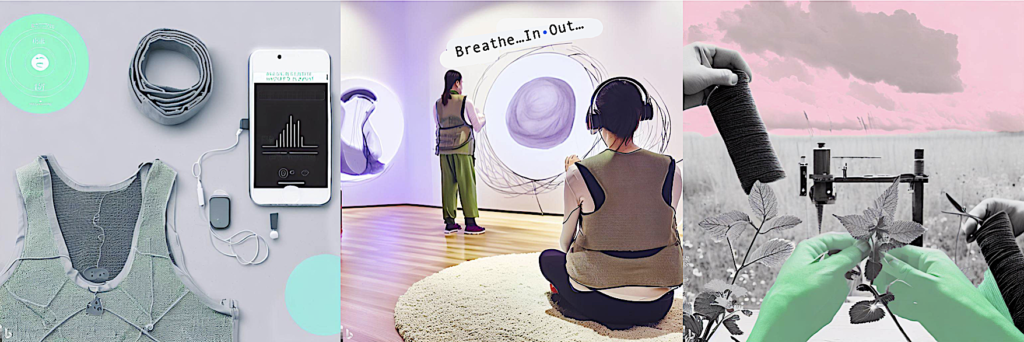
Introduction
“Like ocean waves, we inhale life’s essence, embracing treasures of myriad earthly layers…We release it all in surrender…And yet, within, our most secret and pure flower blooms deep from the inside out.“
The “InOut” project is an immersive art-ethnographic collaboration that investigates the intersection of technology augmented breathing, mindfulness, and climate change action. Situated within the larger “Biohybrid Bodies: how might we come to live with Living Machines?” project hosted at UCL, this project combines art, science, and humanities to create a soft robotics-controlled breathing garment and multimedia installation. By incorporating storytelling, sensory design, and soft robotics, the project aims to foster inclusiveness, compassion, and connection with all living beings.
The well-being of our planet is in jeopardy…Rising crises stemming from chemical pollution, land seizures, and the decline of biodiversity are sparking conversations among experts from various fields and urging immediate action. The sheer scale of disruption has compelled us to reevaluate the intricate connections between technology, nature, and culture, as well as the dynamics of knowledge, progress, and the protagonists and antagonists involved.
Technology can be both harmful, acting as a contaminant that leads to damage, and beneficial, serving as a healing tool that can save lives, depending on its application with empathy by its creators, guided by the holistic wisdom of our planet. A significant challenge lies in fostering collective thinking as an interconnected network of relationships with shared histories, memories, breath, and uncertain futures.
THE VERY ACT OF BREATHING CONNECTS US ALL, transcending differences and boundaries. We share the same air, inhaling and exhaling, regardless of our opinions, ideologies, forms…Our breath intertwines, reminding us of the intricate web of life we’re all a part of, urging us to embrace unity and understanding.
If humans were to become extinct, the perception of our species by nature and non-human life would likely be one of a complicated legacy. Humans have undeniably left a profound impact on the environment, both positive and negative. While our actions have led to habitat destruction, pollution, and the loss of countless species, humans have also displayed ingenuity and the capacity for compassion. Nature, without the influence of human activity, would gradually heal and reclaim the spaces that we once occupied. Non-human life, free from human interference, would likely continue in its relentless pursuit of survival and adaptation. The absence of humans would allow ecosystems to restore their delicate balance, and nature would continue its intricate dance, oblivious to our existence. Ultimately, the perception of humans by nature and non-human life would be a reflection of our complex role as both a destructive force and a species capable of great potential.
There is something incredibly inspiring and brimming with hope: the ability to interact with present humans, future humans, and nonhuman nature, and the potential for transformative change.
Mindfulness Practices and their Objectives

The rise of mindfulness in the Western world has sparked the ecopsychology movement, focusing on the psychological bond between humans and nature. By embracing the wisdom of cultures that value nature, mindfulness enables us to rediscover our ecological responsibility and act more sustainably. Prior research supports the association between mindfulness and environmentally responsible actions. Deep ecology principles advocate for a shift in consciousness through practices like mindfulness, transcending Western dualistic thinking. Compassion and reflective thinking, cultivated through mindfulness, correlate with pro-environmental values. By exploring the role of mindfulness in adapting to climate change, the project aligns with the concept of “mindful climate adaptation” (Wamsler, 2018). Mindful climate adaptation involves considering the interdependence of individual and planetary well-being, along with evaluating potential drawbacks. Mindfulness has the potential to foster climate adaptation at multiple levels, calling for critical examination and utilisation of this potential to drive global change. Through the integration of mindfulness practices into our project and engaging participants in mindful breathwork, we create a space for individuals and communities to be kind towards themselves and others, and to reflect and be open-minded when evaluating options about personal circumstances and possibilities about how to adapt consciously and resiliently to climate change.
Mindfulness, rooted in Buddhist and Zen traditions, has gained widespread popularity and is associated with various products, apps, and practices. It involves observing our habitual thoughts and emotions to alleviate stress and over-identification. However, it is crucial to recognise that knowledge is situated within power relations, as philosopher María Puig de la Bellacasa emphasises. These power dynamics shape our bodies, minds, and environments, influencing our thoughts. To harness the true potential of mindfulness, it must be grounded in an understanding of power and a commitment to care and community. By acknowledging the institutional sources of suffering and integrating ethics, mindfulness becomes a powerful tool for critical engagement and resistance against the forces that perpetuate human distress. It empowers us to navigate these dynamics, foster a sense of community, and work towards liberation.
Liberation, according to Buddhism, is all about finding real freedom regardless suffering. It’s like discovering a special kind of happiness that lasts. Buddhism explains that everything in life keeps changing, even the things we like or own. To reach liberation, we need wisdom and mindfulness. Wisdom helps us understand that nothing stays the same forever, so we shouldn’t rely too much on outside things to make us happy. Mindfulness means being aware of the present moment without judging it. Being kind and taking responsibility for our actions are also important. When we combine wisdom, mindfulness, kindness, and responsibility, we can find deep peace and compassion, and feel truly liberated and confident to do our best.
The project draws inspiration from two mindfulness practices focused on breath: Tonglen and Shamatha.
Tonglen, a Tibetan practice known as “sending and receiving,” encourages letting go and accepting through breathwork.
Shamatha, also called Shine, emphasizes peace and tranquility, fostering concentration, self-awareness, and inner calm.
Both practices aim to cultivate love, compassion, and inclusiveness towards all living entities.
Biohybrid Breathing: Exploring the Intersection of Breath and Technology
One of the core concepts explored in the InOut project is the idea of biohybrid breathing. Biohybrid breathing refers to the fusion of biological processes, specifically breath, with technology. It encompasses the integration of human breath and the soft robot-controlled breathing garment being developed for the project. This innovative approach creates a symbiotic relationship between the human participant and the technological interface, blurring the boundaries between the organic and the artificial and at the same time unravelling a hybrid nature of the breath itself.
The soft robot-controlled breathing garment is designed to capture and respond to the user’s meditative breathing patterns. By utilising soft robotics and technology, the garment provides a unique and personalised breathing experience, enhancing the participant’s engagement with their breath and creating a biohybrid interaction.
In the context of our new project, InOut, we draw inspiration from an existing system called Corsetto. Corsetto is a full stack system design and platform for upper-body haptics that focuses on respiratory regulation for opera singers. However, our project involves developing a completely new concept. We aim to explore biohybrid breathing and meditation through the integration of soft robotics and immersive art. By leveraging technology, we are fabricating a robotic upper body garment capable of capturing and stimulating specific muscle groups involved in meditative respiration. While Corsetto served as an initial reference point, our project’s scope expands beyond vocal pedagogy. Our vision is also inspired by applications such as respiratory support and recovery for runners and other applications similar to the MIT BioSuit.
Breath, as a fundamental aspect of human existence, serves as a bridge between the individual and the surrounding environment. Through biohybrid breathing, the project aims to explore the potential for technology to amplify and deepen the transformative aspects of breathwork. By integrating the garment with bio-materials, such as nettle fibers, the project further emphasizes the connection between human beings, nature, and the collective breath of life.
The integration of breath and technology within the context of biohybrid breathing opens up new possibilities for self-exploration, mindfulness, and ecological awareness. It offers a unique approach to fostering a deeper connection between humans and our environment, emphasizing the interdependence of all living beings and the urgency of addressing climate change.
Wearable Design and Soma Interaction
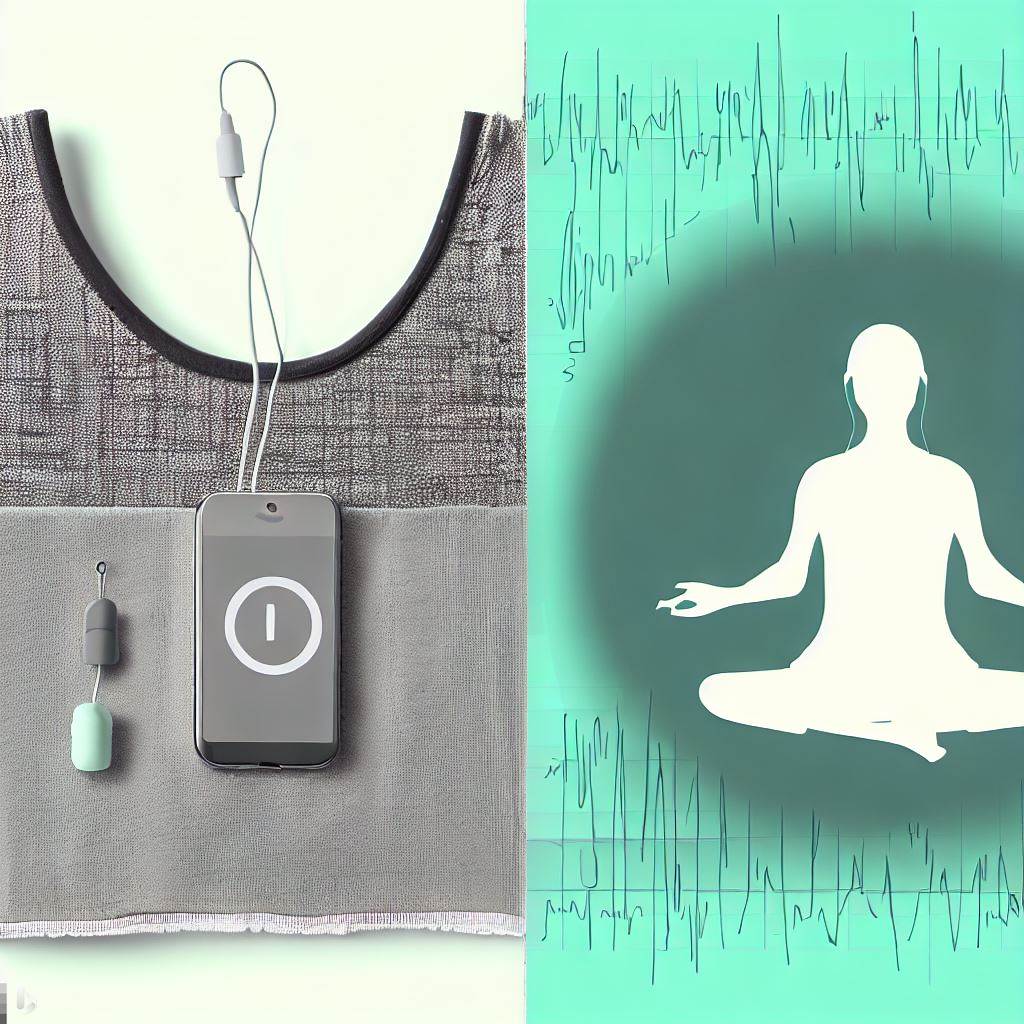
Our project centers around the vital practice of breathing and its connection to mindfulness. To create a more immersive and engaging experience, we implement wearable technology that captures and reproduces the unique signature of an experienced breath meditator. This recorded breath signature is then played on the bodies of the exhibition audience, who wear the breathing vests. By immersing participants in this personalised breath experience, we aim to facilitate active engagement and interaction with each other’s mindfulness journeys. This approach makes the transformative power of breath and mindfulness accessible to all, fostering a deeper understanding and appreciation within the exhibition space.
InOut focuses on creating a technology augmented breathing garment using recyclable materials and sustainable bio-materials such as nettle fibers that can be used as organic textiles.
By concentrating on these eco materials, the project aims to minimize the environmental impact typically associated with traditional textile production. Nettle fibers, derived from the nettle plant, are an excellent choice due to their remarkable properties and eco-friendly nature.
Nettle fibers possess a plethora of desirable characteristics for textile applications. They are known for their exceptional strength, durability, and flexibility, making them suitable for various garment types. These fibers also exhibit excellent breathability, allowing air circulation and enhancing comfort for the wearer. Moreover, nettle fibers can be processed using environmentally friendly methods. The extraction and processing of nettle fibers typically involve less energy consumption and chemical treatment compared to synthetic fibers, reducing the overall environmental impact of textile manufacturing.
The discovery of using nettle for fabric production is not recent; it has been known for at least 3,000 years. However, after World War II, cotton became the preferred choice over natural fibers like nettle due to its affordability and ease of handling, despite its detrimental effects on the environment.
In Nepal’s Himalayan foothills, the nettle fiber industry is being cultivated through collaboration between Ellie Skeele, the founder of Himalayan Wild Fibers, and the local community.
Two main species, European nettle and Himalayan nettle, are known for nettle fiber production. While European nettle poses challenges for commercial cultivation, Himalayan nettle thrives in the region. The fiber, extracted from the stems of both species, is free of stinging properties.
Himalayan nettle (here, Himalayan Giant Nettle – Girardinia Diversifolia – locally known as puwa or allo), considered the longest fiber known to humankind, surpasses linen in terms of fineness, strength, and elasticity, offering a sustainable textile solution. It grows naturally in Africa and various Asian countries, including Nepal at altitudes ranging from 1300 to 3000 meters. Despite its prickly nature, Himalayan nettle has been utilized as a valuable fiber resource for centuries. The stems are harvested, and the bark is peeled off to extract the long and robust nettle fiber, similar to ramie (one of the oldest fiber crops, used for at least 6,000 years; East-Asia). This fiber finds applications in the textile industry, particularly in the production of garments, including summer and winter wear and sportswear.
In the UK, Allan Brown – a textile artist, set up a website http://www.nettlesfortextiles.org.uk/wp/ that serves as a repository of “all things nettle related, especially the sharing of skills and techniques that will help us best utilise this incredible resource for local textile production”.
Attention all textile enthusiasts! Prepare to be captivated by the recently released documentary, “The Nettle Dress,” which beautifully explores the realm of nettle textiles. Join Allan Brown on a mesmerizing journey as he weaves a dress that represents resilience and celebrates the legacy of craftsmanship. Be sure to check out the trailer here https://youtu.be/jQNqxezDsJ4.
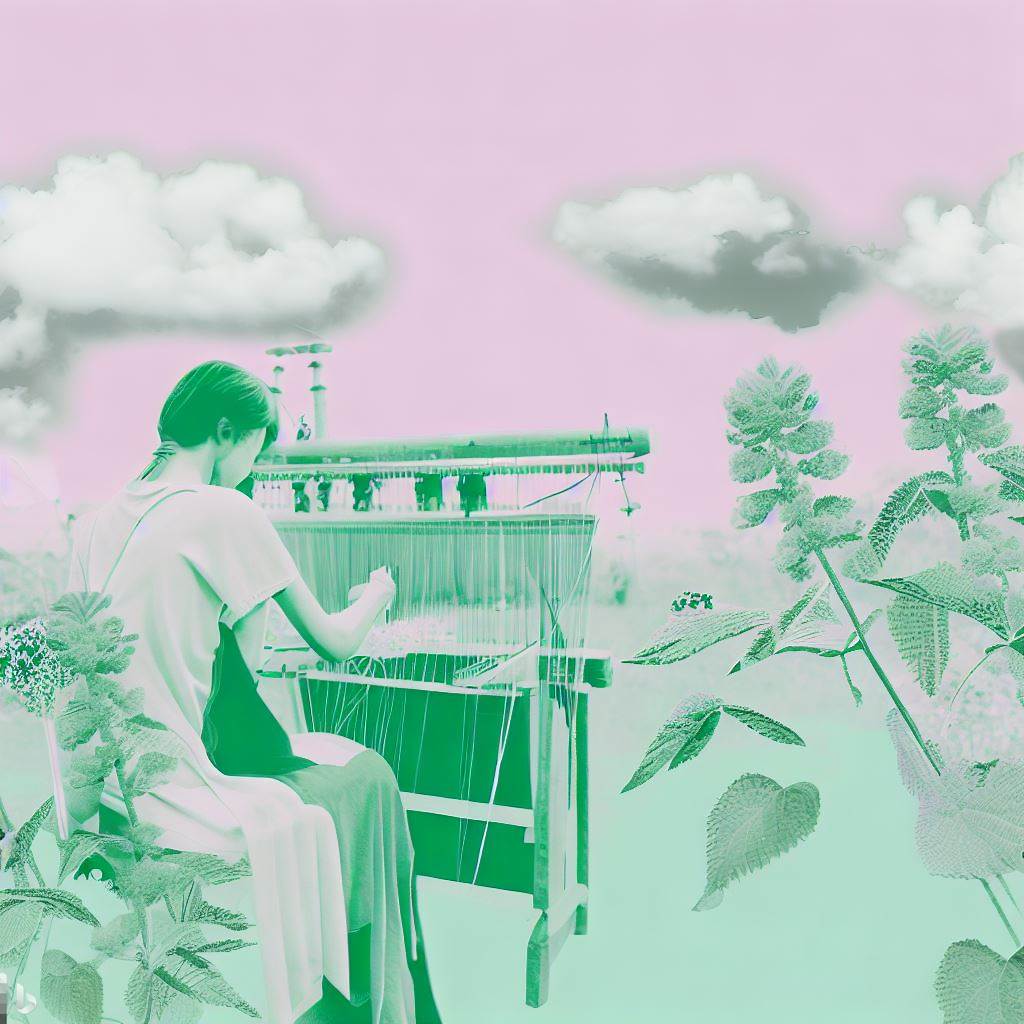
The utilisation of nettle fibers as organic textiles opens up numerous possibilities for the development of smart breathing garments.
By employing soft robotics and soma design methods, the project aims to empower audiences to explore and imagine new possibilities for soma-based interactions.
Moreover, the wearable design is intricately linked to Tibetan meditation practices focused on breath and human-nature relationship and complements the immersive audio and video narratives, enhancing the overall experience.
Multimedia and Storytelling
Multimedia and storytelling are integral to the project, combining recorded meditative breath soundscapes, guided meditations, and historical references. Through immersive audio and video narratives, participants engage with themes of mindfulness, sustainability, beyond-human-design, and climate change action.
The project’s storytelling draws inspiration from “The Story of Nettles and Milarepa”, which explores the human-nature relationship in the context of climate action, examining Milarepa’s teachings and their relevance through the lens of ecocriticism. Milarepa’s real name was Mila Thöpaga, which means “Mila who is a joy to hear” and signifies the uplifting and transformative power of his songs and teachings that touch the hearts of listeners, bringing joy, inspiration, and a deep sense of connection to the spiritual awakening; And also “Laughing Vajra”, the term vajra encompasses a range of meanings that span from symbolic representations to metaphors for enlightened qualities, here it refers to the diamond-like indestructible nature of awakening and represents the essential nature of reality, the full latter name conveys Mila’s unshakeable realisation, unwavering joy, and ability to transcend suffering and find humour and joy amidst the challenges and hardships he faced in his life. He was a revered figure in Tibetan Buddhism; c. 1052–c. 1135 CE – 11th century.
Ecocriticism and its Significance
Ecocriticism, the study of the relationship between literature and the environment, serves as a framework for deepening ecological consciousness and inspiring environmental sustainability. Milarepa’s journey, as portrayed in “The Life of Milarepa,” highlights his profound connection with nature and his understanding of sustenance from the natural world. The story of Nettles emphasizes the importance of sustainable living, simplicity, and valuing the Earth’s resources in the context of climate action.

“The Story of Nettles and Milarepa”:
“About another year had passed when several hunters from Tsa who had failed to catch any game appeared. I was clothed in the three cloth sacks tied with a jute rope and resting in meditative equipoise. They prodded me with the ends of their bows and said, “Is this a man or a ghost? Judging by its looks and its garb, it is probably a ghost.”
I opened my mouth and said, “I am most definitely a man.”
Recognising the gap in my teeth, they asked, “Are you Töpaga?”
“I am,” I replied.
“In that case we request some food for now, which we will not fail to repay later. It was said that you once returned to the village, but that was many years ago. Have you been living here all the while since then?”
“I have indeed,” I replied. “But I have nothing agreeable for you to eat.”
“We will take whatever you eat. That will be enough for us.”
“Very well then, build a fire and cook some nettles.”
When they had built a fire and cooked some nettles they said, “Now we need some meat or fat to season it.”
“If I had meat or fat my food would not have lacked nourishment, but I have not had any for years. For seasoning, use nettles.”
“In that case, we need some barley flour,” they said.
I replied, “If I had flour my food would not have lacked substance, but I have not had any for years. For flour, too, use nettles.”
“Well then,” they added, “we cannot do without salt.”
I replied, “If I had salt my food would not have lacked flavour, but I have not had any for years. For salt, use nettles.”
They said, “Definitely, with your food and clothing, you will never improve your appearance or regain your strength. This is not becoming of a man. Even a servant has a full belly and warm clothes. There is no one in the world more miserable or pitiful than you.”
“You shouldn’t say such things,” I replied.
“I am the most formidable of men to have obtained a human body. I have encountered the likes of Lhodrak Marpa Lotsawa. I have received the oral instructions for attaining buddhahood in one life and one body. Having renounced this life, I am meditating alone in the mountains and devoting myself to achieving this enduring aim. I have sacrificed food, clothing, and conversation and in this life I shall defeat my enemies, the mental afflictions…”
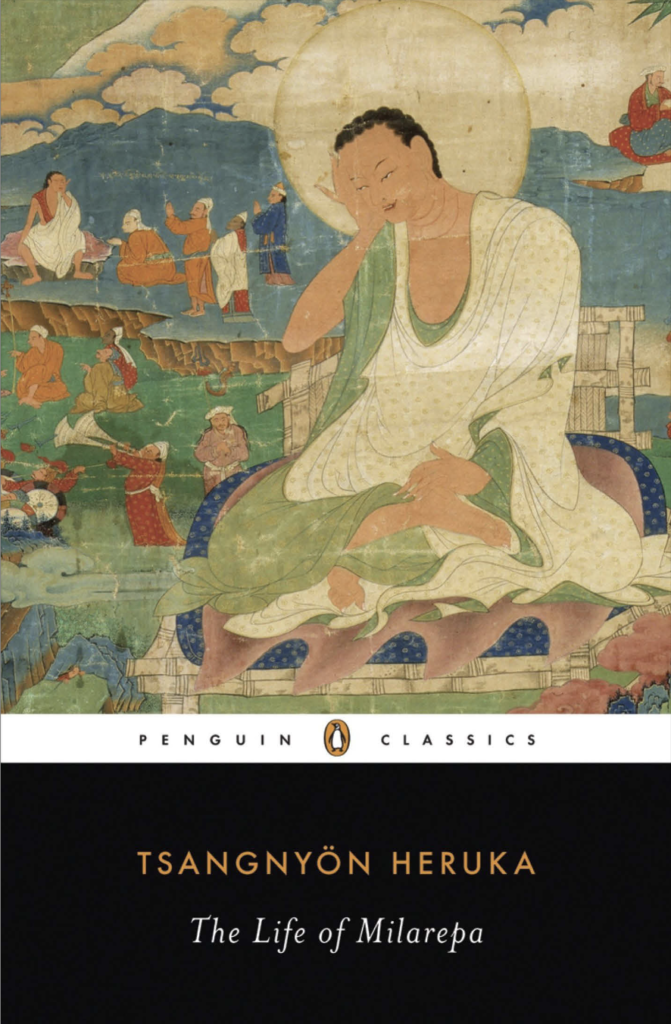
SOURCE:
[1] Heruka, Tsangnyon. The Life of Milarepa (Penguin Classics) (pp. 139-140). Penguin Publishing Group. Kindle Edition.
Current Project Objectives and Installation – InOut at UCL (2024)
The current objective of the project is to create a smart breathing vest and an immersive audio and video installation for an exhibition at UCL in 2024.
The installation aims to evoke biohybrid breathing, consciousness, and pollution themes, as well as climate change action. Participants will encounter the installation using soft robotic vest, video projections, headphones, and mobile devices, immersing themselves in a 15-minute experience. A Q&A session will allow participants to engage with the creators following the experience.
At the core of this initial exhibition are three breathing vests, crafted from eco-friendly nettle textiles and powered by advanced soft robotics air pumps.
Upon entering the exhibition space, visitors will be immersed in a carefully curated environment designed to evoke a deep sense of biohybrid breathing. The soft robot vests, with their unique meditative breath movements, establish a dynamic interaction between human participants and technological companions.
The immersive experience is further enhanced by captivating video projections that surround the visitors, transporting them into imaginative dimensions of exploration and contemplation. The integration of soft robots, biohybrid breathing, and thought-provoking sounds and visuals fosters a harmonious connection, engaging the senses and sparking introspection.
To delve deeper into the immersive encounter, visitors will be provided with headphones and access to mobile devices. These devices serve as gateways for exploring the intricacies of consciousness and the profound interplay between humanity and the environment.
During the 15-minute experience, visitors are invited to reflect on the impact of pollution on our collective well-being, while embracing the intertwined nature of biohybrid breathing.
The Q&A session will provide an opportunity for visitors to engage with the creators. This dialogue aims to foster a deeper understanding of the technical aspects and artistic vision underlying the project, facilitating an exchange of ideas and insights.
Ultimately, this immersive experience encourages contemplation, ignites curiosity, and encourages meaningful conversations about our relationship with the world within and around us.

VR Integration – Future Interfaces
Additionally, there is a possibility to enhance the exhibition experience using virtual reality (VR) technology. By incorporating VR headsets and immersive digital environments, visitors can be transported to virtual realms, amplifying their engagement and sense of exploration.
With VR, participants can embark on virtual journeys that simulate biohybrid breathing in imaginative landscapes or explore interactive simulations that reveal the interconnectedness of consciousness and pollution showing a possibility for creative and conscious personal transformation and climate change action.
Integrating VR with the existing elements of soft robotics, biohybrid breathing, and multimedia projections has the potential to take the exhibition to new levels, offering a truly immersive and unforgettable encounter that pushes artistic boundaries and fosters meaningful interaction.
As we explore the integration of virtual reality, we will continually refine and expand the project to create a more immersive and captivating encounter. We will keep you updated on the project page as these exciting developments take shape, allowing you to stay informed and eager about the ongoing enhancements to the exhibition.
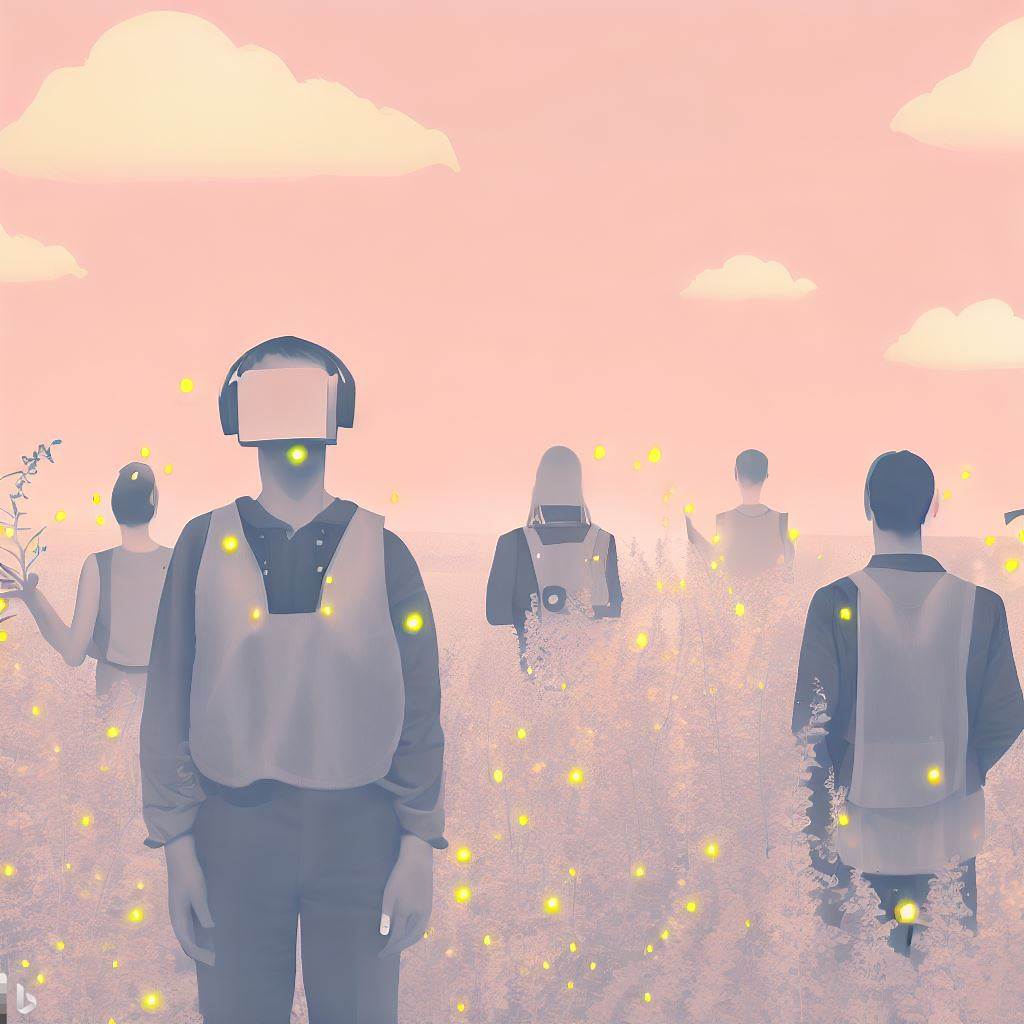
Lead Artist’s Disclaimer: A Note on Cultural Sensitivity and Respect
As the lead artist behind the “InOut” project, I wish to express my deepest respect for the profound traditions of Buddhism, particularly the Tibetan tradition, which has been a significant influence on this project. It is essential to recognise the sacred teachings, wisdom, and unique cultural aspects associated with these traditions.
As a practitioner since 2005 and someone actively studying Tibetan medicine, I approach this project with a personal connection to and respect for Tibetan and Buddhist methods and teachings. My motivation stems from a sincere wish to share elements of my own journey and experiences with mindfulness through the medium of art – a form of auto-ethnography.
The intention behind the project is not to appropriate or commodify any aspect of the sacred teachings or unique culture. Instead, it aims to offer a personal exploration, a reflection of my own engagement with these practices, and an attempt to convey the impact they’ve had on my life.
The inception of the “InOut” project emerged from a collaborative dialogue between myself and Ned, the Principal Investigator (PI) of the Biohybrid Bodies project at UCL. Our discussions and shared interests converged on the intersections of meditative breath and the urgent global issue of climate change.
Our collaboration is founded on mutual respect and a genuine interest in integrating diverse perspectives.
In our exploration, we draw inspiration from two breath-focused practices: Shamatha (Shine) and Tonglen (Atisha’s Mind Training in Seven Points – a form of mind training called “lojong”). While these practices may be associated with health and well-being benefits, it’s important to note that they are tools for concentration and contemplation, not traditional Buddhist meditations. For those seeking a more in-depth understanding and spiritual guidance, connecting with a genuine teacher or guide is advisable. The Seven Points of Training the Mind According to the Great Vehicle by Geshe Chekhawa Yeshe Dorje is one of the foundational texts guiding practitioners in these mind training practices. These teachings cover essential points of Mahayana Buddhism, one of the major branches of Buddhism, alongside Theravada and Vajrayana.
We acknowledge the potential sensitivities associated with cultural appropriation and assure the audience that the project is grounded in a deep appreciation for the wisdom embedded in these traditions. Our aim is to create an immersive experience that invites contemplation, fosters mindfulness, and promotes a connection with the broader themes of consciousness as well as ecology and climate change.
This collaboration is an ongoing exploration, and we welcome thoughtful reflections and feedback from our audience. Together, we hope to contribute to meaningful conversations about these topics.
Conclusion
“InOut” seeks to inspire individuals and communities to take meaningful actions towards a sustainable and resilient future. By fostering an understanding of the interconnectedness between humans, nature, and climate change, the project encourages compassion, inclusiveness, and mindfulness. Through the exploration of biohybrid breathing, the project challenges conventional boundaries and invites participants to reimagine the possibilities of human-environment-technology interactions. InOut demonstrates that we have everything we need to embrace mindful climate adaptation within ourselves.
By harnessing a simple yet powerful technology — the breath, which is biohybrid in nature — we can tap into our innate wisdom and strength. This recognition serves as a powerful reminder that the solutions to the challenges posed by climate change lie not only in external advancements but also in our ability to cultivate mindfulness and connection with the natural world. Our breath, a fundamental aspect of our existence, symbolises the interconnectedness between our internal and external environments. It is a constant reminder that we are intimately tied to the Earth, and all its living beings. By cultivating awareness of our breath and using it as a focal point for mindfulness, we can tap into a deeper understanding of our interconnectedness and develop a more profound sense of responsibility towards the planet.
The InOut project and the nettle vest offer more than just a mindful climate adaptation. A vest like this, can provide a valuable support for individuals with respiratory issues, acting as a dedicated breath companion that aids in healing by triggering muscles and assisting the respiratory system, helping those with conditions like asthma or COPD to restore their breath and find relief. By combining technology and inclusive design in the context of digital health, the breathing nettle vest is promoting healing and well-being. It serves as a bridge between our inner world and the external environment, fostering resilience and restoring breath. Beyond the physical benefits, the vest also supports self-reflection and connection with our inner wisdom through its gentle robotic touch. In our fast-paced lives, it can be challenging to find time for quiet reflection and self-care. The vest, functioning as a soft robot, provides a magical nudge, encouraging us to prioritise our well-being and reconnect with our bodies. Through its sensory tactile messages, it reminds us of the importance of breathing, much like the teachings of Milarepa, the Tibetan yogi.
When we wear the vest, it helps us take a break, breathe deeply, and treat ourselves kindly. It becomes a helpful companion, supporting us in finding balance and inner peace in the midst of our busy lives. Once we are calm and focused, we can think about how we’re feeling and what we can do about our situation and the world around us.
Overall, the InOut exhibition provides a tranquil and reflective environment, inviting us to contemplate our own identities and to consider our roles in creating a more harmonious world, for ourselves, our communities, and the environment.
Making Kit for Biohybrid Breathing – Community Engagement (additional work-in-progress pilot project)

Introduction:
Project title: “Mila: Biohybrid Breathing Maker Kit for Mindfulness, Nettle Textiles, and Climate Change Action”.
This additional project aims to address the urgent need for deep transformative action in the face of climate inequality and collapse.
Inspired by the interdependence of life on Earth and the planet’s atmosphere since the great oxidation event, this project aims to involve communities in fostering awareness and positive engagement with climate-related concerns.
We recognise the current challenges posed by human technologies of the Anthropocene, which have polluted and destabilised the delicate balance of respiratory exchange. Without intervention, the future of all life on Earth becomes a struggle for breath.
The Mila project’s name draws inspiration from Milarepa (see above) and focuses on the development of a biohybrid breathing maker kit, haptic vest, and nettle textiles to foster a new perspective on breath, mindfulness, and positive climate action.
Mindfulness possesses the potential to contribute to climate adaptation at various levels, encouraging a thoughtful exploration and utilisation of this potential to support diverse approaches to global change.
Mila’s journey, depicted in “The Life of Milarepa,” showcases his profound bond with nature and his understanding of deriving sustenance from the natural world. The story of Nettles underscores the significance of sustainable living, simplicity, and the appreciation of Earth’s resources within the context of climate action.
By incorporating mindfulness practices into our soft robotics maker kit and involving participants in sustainable crafting and mindful breathwork, we aim to equip individuals and communities with the tools to adapt thoughtfully and resiliently to climate change. This initiative is dedicated to offering assistance, resources, and knowledge to individuals, communities, and organisations, inviting them to partake in a collaborative journey focused on democratic creation, respiratory well-being, mindfulness, inclusivity, compassion, and environmental awareness.
More information will be shared in the near future, we will keep you updated!
InOut at Sheffield Doc Fest
The project has been selected as part of the Alternate Realities Talent Market at Sheffield Doc Fest. This prestigious platform showcases artists using digital technologies to push storytelling boundaries and experiment with non-fiction narratives.
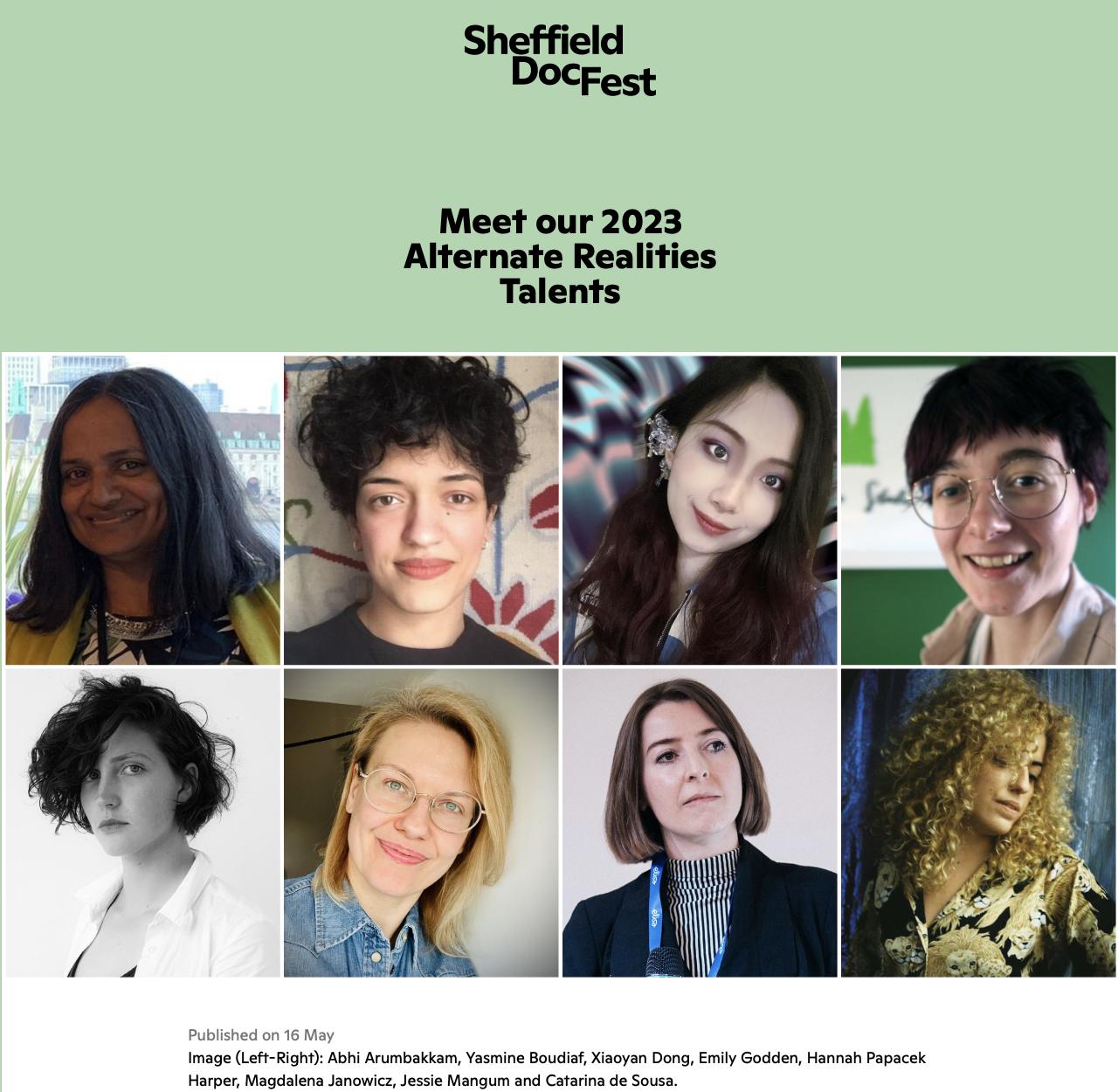
Meet the 2023 Alternate Realities Talent Market cohort: Abhi Arumbakkam, Yasmine Boudiaf, Xiaoyan Dong, Emily Godden, Hannah Papacek Harper, Magdalena Janowicz, Jessie Mangum and Catarina de Sousa.
More info: https://sheffdocfest.com/news/meet-our-2023-alternate-realities-talents
Team
The team behind the project includes Magdalena Janowicz, Yinmiao Li, and Ned Barker. We seek to pioneer new frontiers of artistic expression with bio-materials, robots, and technologies of existence.
Our bios:

Magdalena Janowicz is a researcher, designer, and artist exploring the convergence of technology, art, human experience, and planetary well-being. Holding an MSc in Human-Computer Interaction (HCI) from UCLIC, University College London (UCL), a world-leading centre of excellence for interdisciplinary research on HCI, she leads the ‘InOut’ project. She completed creative writing and directing courses under the guidance of industry professionals such as Katie Mitchell, with interests extending to immersive multimedia technology, theatre, and film.
In addition to HCI and creative education, she studied Psychology, Game Design, Occupational Therapy, and Buddhist Studies, and had the privilege of learning from Dr. Peter Malinowski, a renowned expert in the field of neuroscience, psychology, and meditation. She is also a student of traditional Tibetan Medicine (Sowa Rigpa).
She uses her inter-and-trans-disciplinary approach to bridge the gap between academia and real-world applications, actively addressing societal challenges and advocating for inclusivity, equality, and accessibility.

Yinmiao Li is an interaction designer and multimedia artist based at Northwestern University. She strives to bring interactive media practices to the field of learning sciences and education. She works on designing multi-sensory experiences, specifically engaging in tangible interaction, in supporting people’s creative expression, as well as their reflection on technology, their identities, and society at large.
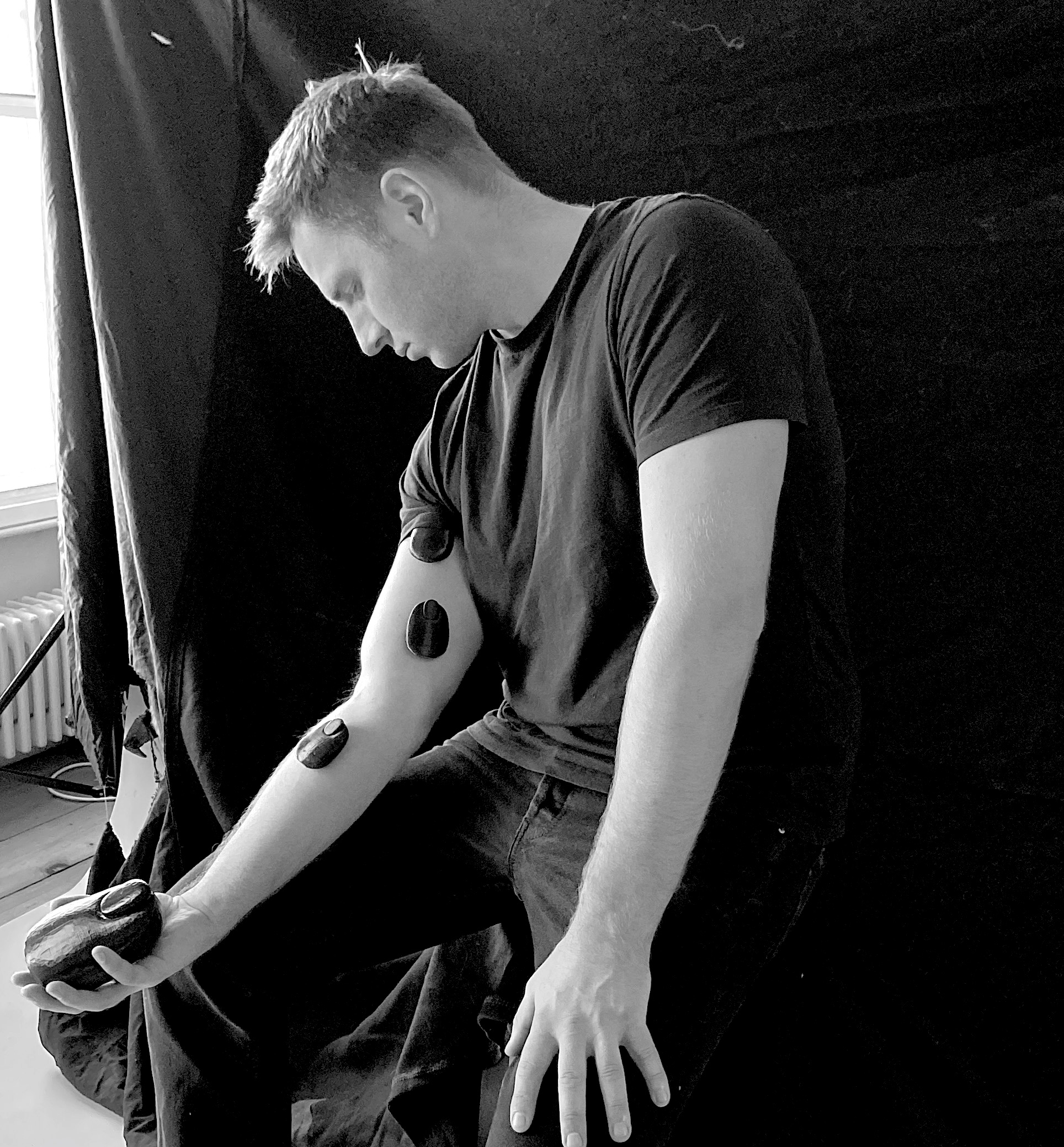
Ned Barker is a sociologist of technology and the body based at the UCL Knowledge Lab. He is currently PI of ‘Biohybrid Bodies: a sociological framework for living with Living Machines’, funded by the Leverhulme Trust. As an experienced ethnographer Ned combines sensory, creative, and collaborative methods to explore the complex relations between body, technology, and society.
https://biohybridbodies.wordpress.com